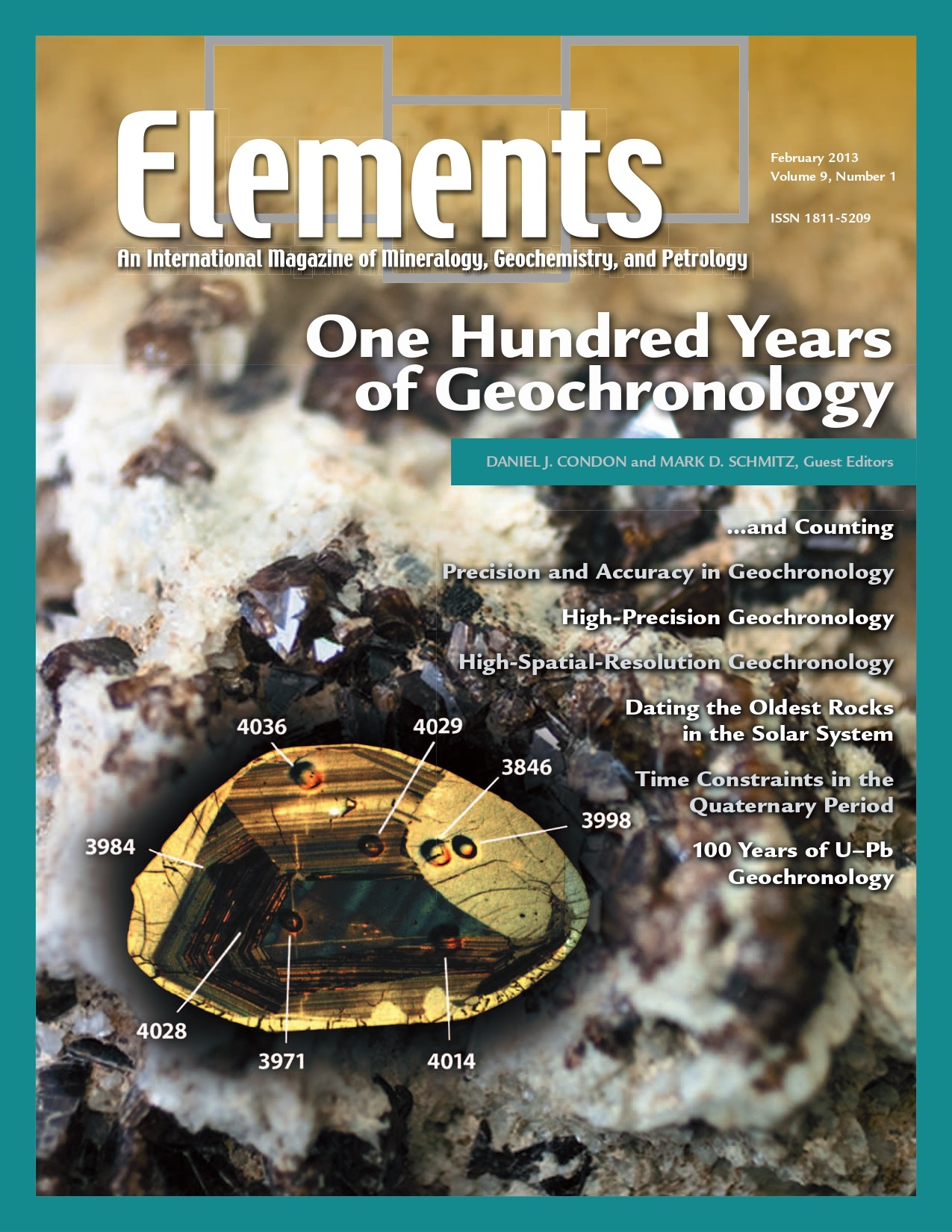
Granitic Pegmatites, August 2012, Vol. 8, No. 4
June 28, 2024
Kaolin, June 2014, Vol. 10, No. 3
June 28, 2024One Hundred Years Of Isotope Geochronology, February 2013, Vol. 9, No. 1
$20.00
In 1913, Frederick Soddy’s research on the fundamentals of radioactivity led to the discovery of “isotopes.” That same year, Arthur Holmes published his now famous booklet The Age of the Earth.
One Hundred Years Of Isotope Geochronology
February 2013, Vol. 9, No. 1
In 1913, Frederick Soddy’s research on the fundamentals of radioactivity led to the discovery of “isotopes.” That same year, Arthur Holmes published his now famous booklet The Age of the Earth. Combined, these two landmark events established the field of science we know as “isotope geochronology.” Today, isotope geochronology underpins much of our knowledge of the absolute age of minerals and rocks, and the records they contain. This field is constantly evolving, reflecting and responding to scientific drivers that require more highly resolved timescales, the microscopic analysis of smaller zoned minerals, or the generation of robust data sets in novel materials. This series of articles provides perspectives on the state of the art in the field of radioisotope dating—from the challenges of dating the Solar System’s oldest materials to resolving the record of Quaternary climate change, and the four and a half billion years in between.
Why You’ll Love Elements Magazine:
- Expert Contributors: Articles written by renowned researchers in the field of geoscience.
- Engaging Content: Join a community of readers who are passionate about Elements.
- Exceptional Quality: Each issue is printed on high-quality paper with stunning visuals and detailed illustrations that bring complex scientific concepts to life.
Order your copy of the February 2013 issue of Elements magazine today and learn about one hundred years of isotope geochronology.
Related products
-
Carbon Dioxide Sequestration, October 2008, Vol. 4, No. 5
$20.00Storage of carbon in the subsurface involves introduction of supercritical CO2 into rock formations beneath the surface of the Earth, typically at depths of 1000 to 4000 meters. Although CO2 is a relatively benign substance, the volume being considered is large.
-
Water On Mars, June 2006, Vol. 2, No. 3
$20.00During the past several decades, spacecraft data have transformed the planets from astronomical objects into geologic worlds. Mars is the current focus of planetary exploration, and NASA’s objectives for this effort are based on the theme, “follow the water.
-
Energy: A Geoscience Perspective, June 2007, Vol. 3, No. 3
$20.00The issue of energy resources in the future may be one of the most important in the 21st century. Future climate change and the ways to abate it while still supplying needed energy will impact future political relations, world economics, human health, and the environment.




